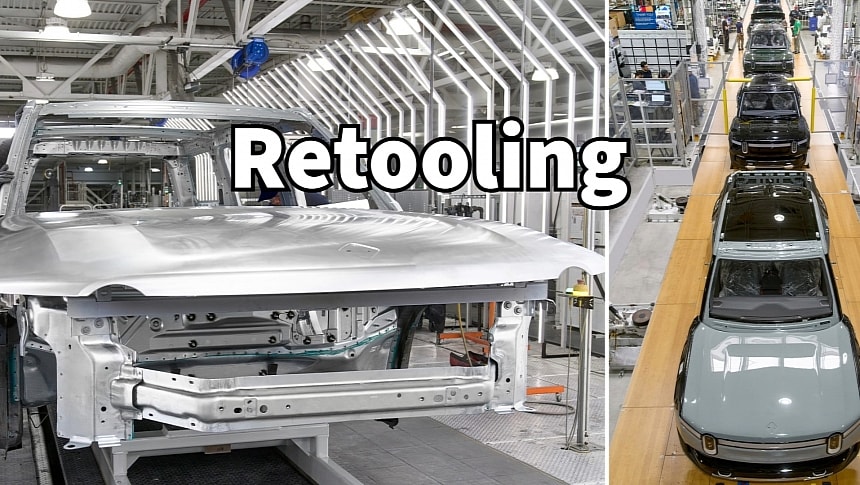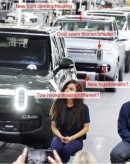Rivian announced the first quarter financial results, painting a rosier picture despite posting a $1.45 billion net loss in the quarter. The Normal, Illinois, factory retooling and new part designs and optimizations will allow the company to improve R1 costs by up to 50%. This makes Rivian confident it could become profitable by the year's end.
Rivian is the EV startup that lost the most money in its six-year existence, exceeding $20 billion in cumulative cash burn by the end of March 2024. That's a lot of money to burn, and only the large coffers afforded by the Amazon partnership prevented Rivian from going extinct by now. To put things into perspective, Fisker threw in the towel after spending $2.0 billion. Tesla's peak cumulative cash burn topped at about $11 billion after nine years before turning a profit.
Much of Rivian's cash burn problems were caused by adverse market conditions and supply chain disruptions that prevented it from monetizing the launch of the R1T, the first electric pickup truck to market. By the time it could produce the R1T in enough numbers, people were less interested in paying over $80,000 for a vehicle. The competition also increased significantly after Ford launched the F-150 Lightning at a time when Rivian planned to build a second factory.
The difficult conditions in 2023 forced Rivian to reconsider and delay the Georgia plant while cutting costs across the board. Its main production facility in Normal, Illinois, has been shut down for several weeks in April and May to undergo upgrades and retooling. These upgrades are key to cutting costs and stopping the money hemorrhagic by the end of 2024. However, the upgrades were costly, which means the first-quarter financial results indicate more losses.
Despite an 82% increase (to $1.2 billion) in revenue compared to Q1 2023, Rivian posted a net loss of $1.45 billion in the quarter. The loss is slightly lower than the $1.5 billion reported in Q4 2023 but higher than it posted in Q1 2023 ($1.35 billion). Rivian now has less than $6 billion in cash, which means it could run dry in four quarters if it doesn't cut losses. However, the situation should improve significantly going forward.
The good news is that much of the loss in the quarter was generated by the Normal plant retooling, which means they were one-time expenses. These were also related to costs incurred in advance for the new tech changes and parts integration into the R1 refresh platform. Rivian expects a significant cost reduction in the following quarters, leading to a "modest gross profit" in the fourth quarter of 2024. That would be the first time Rivian made more money than it spent.
Rivian reported a net loss per vehicle of $38,784 in the first three months of the year versus $43K in Q4 2023 and $67K in Q1 2023. The improvements should accelerate thanks to the switch to the refreshed R1 architecture, whose production started on May 6. Together with the plant upgrades, this should allow Rivian to cut production costs in half.
As part of the plant upgrades, Rivian installed nearly 600 new robots on the production line and improved the flow of materials and inventory within the plant. Also, by starting R2 production in Normal rather than the second factory in Georgia, Rivian will save over $2.25 billion. This is why Rivian reduced its 2024 capital expenditures guidance to $1.2 billion from $1.7 billion.
Much of Rivian's cash burn problems were caused by adverse market conditions and supply chain disruptions that prevented it from monetizing the launch of the R1T, the first electric pickup truck to market. By the time it could produce the R1T in enough numbers, people were less interested in paying over $80,000 for a vehicle. The competition also increased significantly after Ford launched the F-150 Lightning at a time when Rivian planned to build a second factory.
The difficult conditions in 2023 forced Rivian to reconsider and delay the Georgia plant while cutting costs across the board. Its main production facility in Normal, Illinois, has been shut down for several weeks in April and May to undergo upgrades and retooling. These upgrades are key to cutting costs and stopping the money hemorrhagic by the end of 2024. However, the upgrades were costly, which means the first-quarter financial results indicate more losses.
Despite an 82% increase (to $1.2 billion) in revenue compared to Q1 2023, Rivian posted a net loss of $1.45 billion in the quarter. The loss is slightly lower than the $1.5 billion reported in Q4 2023 but higher than it posted in Q1 2023 ($1.35 billion). Rivian now has less than $6 billion in cash, which means it could run dry in four quarters if it doesn't cut losses. However, the situation should improve significantly going forward.
The good news is that much of the loss in the quarter was generated by the Normal plant retooling, which means they were one-time expenses. These were also related to costs incurred in advance for the new tech changes and parts integration into the R1 refresh platform. Rivian expects a significant cost reduction in the following quarters, leading to a "modest gross profit" in the fourth quarter of 2024. That would be the first time Rivian made more money than it spent.
Rivian reported a net loss per vehicle of $38,784 in the first three months of the year versus $43K in Q4 2023 and $67K in Q1 2023. The improvements should accelerate thanks to the switch to the refreshed R1 architecture, whose production started on May 6. Together with the plant upgrades, this should allow Rivian to cut production costs in half.
As part of the plant upgrades, Rivian installed nearly 600 new robots on the production line and improved the flow of materials and inventory within the plant. Also, by starting R2 production in Normal rather than the second factory in Georgia, Rivian will save over $2.25 billion. This is why Rivian reduced its 2024 capital expenditures guidance to $1.2 billion from $1.7 billion.







